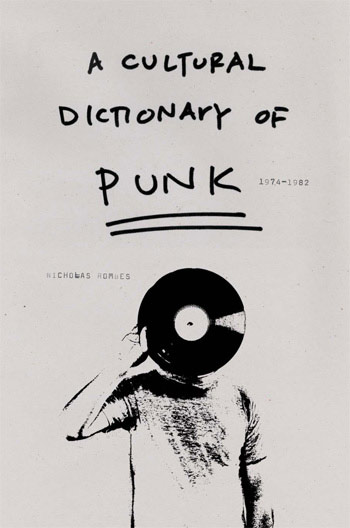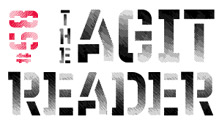
by Nicholas Rombes
Continuum
If you come to (or stay away from) Nicholas Rombes’ A Cultural Dictionary of Punk thinking that it’s just another alphabetized run through the same bands and records in the loud and snotty genre that you’ve read about more times than Sid Vicious had track marks, you’re sorely mistaken. Instead, Rombes has assembled a proudly subjective collection of touchstones through which he attempts to discern, if not a definition of “punk,” then at least some semblance of its signifiers’ import in his own sense of self.
Again, though, this isn't simply a look at punk in the narrow confines of a certain style of music in a certain time and place, beginning with the Addicts and ending with the Zeros. While the former isn’t even in the book, it’s more obvious from page one, an entry on Francois Truffaut’s The 400 Blows and its significance to Richard Hell, specifically the tattered look he created that was soon to be adapted the world over as punk fashion, as well as the author. From there, Rombes lays out a dense miasma of references and ideas as he attempts to map punk’s cultural tropics and the varied routes to them. In citing philosopher Paul Feyerabend’s 1975 book, Against Method, he seems to put to words his own intent: “Given any rule, however ‘fundamental’ or ‘rational,’ there are always circumstances when it is advisable not only to ignore the rule, but to adopt the opposite.” Hence seemingly out of place entries like I'm OK—You’re OK, the 1969 self-help bestseller, Richard Nixon, and Kentucky Fried Movie being included.
If the disparity of the topics seems to indicate a personalized construction of the author, Rombes also dives into his own personal history at times, with little notice, or writes self-reflexively of his own experience with a record (see the Dils section), again elevating the work from an academic exercise (footnotes and all) into a post-modern work similar to that of the critics to which he constantly refers (Bangs, Tosches, et. al). To keep this in check he’s created (though he never admits as such) a co-author of sorts, Ephraim P. Noble, who authors several of the book’s sections, but also pops up as a character elsewhere. Unsurprisingly, Noble’s voice is not unlike that of Rombes, except for one major difference. When Rombes uses the second-person, it is to speak directly to the reader, but when Noble does so, he is evidently speaking to Rombes usually in some regard to the author’s own interaction with the music of the subject matter at hand. It’s an effective device, a way for Rombes to question his own biases, or at least reveal them. Similar to when he describes a Bangs speech at a symposium in Buffalo, Rombes reveals himself to be one of us, not immune to his own histories.
If we read between the lines, so too can we discern less explicit information. It seems the author spent some time in the Cleveland area, and hence the city’s large role in his defining of punk. (Admittedly, Cleveland is one of the three or four punk ground zeroes, though I may be biased too.) What Rombes has created is a guidebook, more than a dictionary, to his self in relation to punk. But then what is culture if not a collection of bits and pieces, systematically being thrown back by the navigator as he siphons his own vision? Even while assembling texts and quoting from wide and varied sources, what Rombes does more than anything is provide evidence—evidence and validation that this thing punk is as significant to the world at large as it is to him.
Stephen Slaybaugh
Man Man Live Review
Scott Walker: 30 Century Man
Michael Jackson 1958–2009
Robin Trower Live Review
Isis Live Review
Depeche Mode, The Dark Progression
Yeah Yeah Yeahs Live Review
Metal Machine Music: Nine Inch Nails and the Industrial Uprising
King Khan and the Shrines Live Review
Chrome Cranks Live Review
The Pains of Being Pure at Heart and Franz Ferdinand Live Reviews
Wilco, Ashes of American Flags
Live reviews of Throbbing Gristle and Diplo
Dinosaur Jr. Live Review
